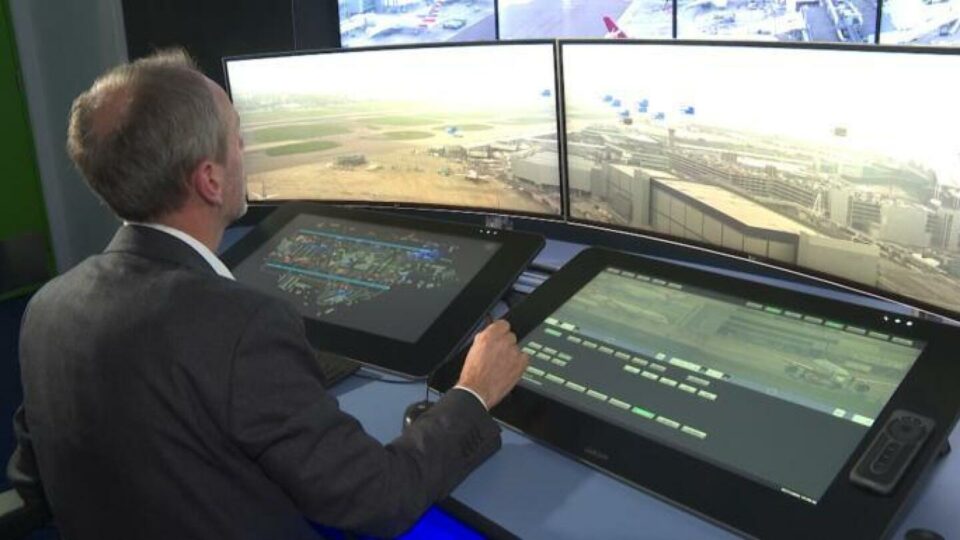What role does predictive analytics play in air traffic control?
“`html
Heathrow Airport Pioneers AI Innovation to Revolutionize Air Traffic Control
The Need for Innovative Air Traffic Control Solutions
As one of the busiest airports in the world, Heathrow Airport has continuously sought innovative solutions to streamline operations and improve passenger experience. With air travel increasing steadily, traditional air traffic control systems face significant challenges in managing air traffic efficiently and safely. This necessitates the integration of cutting-edge technology to enhance the performance and safety of air traffic management.
How AI is Transforming Air Traffic Control
Artificial Intelligence (AI) is at the forefront of this transformation, providing solutions that can analyze vast amounts of data at breakneck speeds. Here’s how AI is being utilized:
- Predictive Analytics: AI systems can predict potential delays by analyzing historical data and real-time variables, such as weather conditions and air traffic volumes.
- Automated Decision-Making: Machine learning algorithms can suggest optimal flight paths, helping to reduce congestion and increase airborne efficiency.
- Enhanced Communication: AI facilitates better coordination between various stakeholders, including ground control, pilots, and emergency services.
Key AI Innovations at Heathrow Airport
Heathrow Airport has implemented several AI-driven innovations to revolutionize air traffic control:
1. AI-Powered Traffic Management Systems
Heathrow is leveraging AI to create systems that manage air traffic more effectively. These systems collect and analyze data from various sources, ensuring real-time adaptability.
2. Advanced Machine Learning Algorithms
Machine learning algorithms are in place to optimize flight schedules. They analyze data from numerous flights to find patterns that can improve scheduling efficiency.
3. Integration of AI with Existing Technologies
The introduction of AI does not aim to replace existing technologies; rather, it enhances them. For instance, AI tools are being integrated with traditional radar systems, providing a comprehensive view of the airspace.
Benefits of AI in Air Traffic Control
Implementing AI at Heathrow Airport brings numerous advantages:
- Increased Efficiency: AI reduces air traffic congestion, optimizing take-off and landing schedules.
- Enhanced Safety: By predicting potential risks and issues before they arise, AI helps maintain a safer flying environment.
- Reduced Delays: AI algorithms minimize delays, ensuring timely arrivals and departures, which is critical for customer satisfaction.
- Cost Savings: By streamlining operations and reducing inefficiencies, AI can result in significant cost savings for airlines and passengers alike.
Case Studies: Successful Implementation of AI at Heathrow
Case Study 1: Flight Scheduling Optimization
Through the use of AI algorithms, Heathrow has managed to reduce flight delays by 15% over the last year. By analyzing historical data and predicting traffic patterns, AI has significantly improved flight scheduling practices.
Case Study 2: Controlled Environment Simulation
In collaboration with tech giants, Heathrow has developed a controlled environment simulation system that utilizes AI to replicate in-flight scenarios for pilot training. This innovation enhances training procedures, resulting in better-prepared pilots.
First-Hand Experience: What Travelers Are Saying
Travelers have reflected positively on the smooth operations attributed to AI innovations:
“I couldn’t believe how quickly we boarded our flight without any delays. It’s like magic!” – Sarah L., Frequent Flyer
“The air traffic controller’s seamless communication made our landing at Heathrow the smoothest I’ve ever experienced.” – John D., Business Traveler
Practical Tips for Navigating AI Changes at Heathrow
As AI continues to evolve the air travel experience, here are some tips for travelers:
Enhancing Airport Operations: The Role of Technology in Flight Management
Optimizing Efficiency and Safety
The introduction of advanced technology is revolutionizing the management of bustling airports, where the volume of flights can be overwhelming. A key objective is to boost both operational efficiency and safety standards. This innovative solution works in tandem with air traffic controllers, providing real-time assistance that simplifies decision-making related to aircraft operations, both on runways and in the skies.
Collaboration with Human Controllers
By integrating this cutting-edge technology, airport personnel can expect a noticeable enhancement in their ability to manage simultaneous flight activities. Rather than replacing human oversight, this system acts as a supportive tool that enables controllers to make more informed decisions quickly. As air travel continues to surge globally—recent statistics indicate an approximate 8% increase in air traffic over the past year—such technological advancements are vital for maintaining smooth operations while prioritizing safety.
Current Trends and Future Prospects
Recent studies highlight that airports implementing these technologies have observed a significant reduction in ground delays and increased routing efficiency. For instance, airports using AI-driven decision support systems reported up to 20% fewer congestion-related incidents compared to previous years.
Innovation does not stop here; ongoing developments suggest even more sophisticated tools will emerge soon, potentially incorporating machine learning algorithms which learn from past data patterns for predictive analysis regarding flight schedules.
as we step further into an era dominated by technology, the synergy between automated systems and human expertise will be key for cultivating safer and more effective airport environments worldwide.


